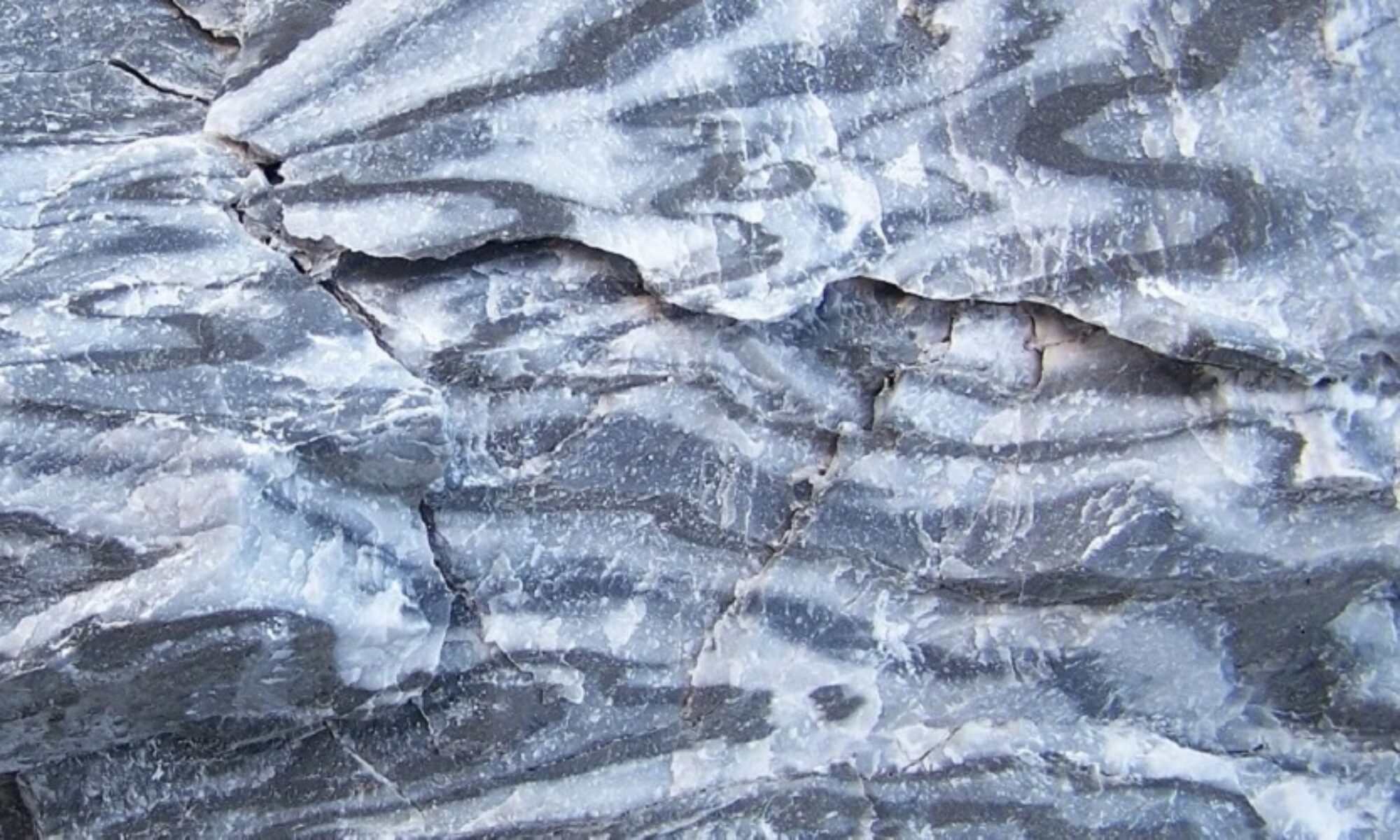The Role of Deformation and Metamorphism on the Distribution of Critical Metals in Massive Sulphides
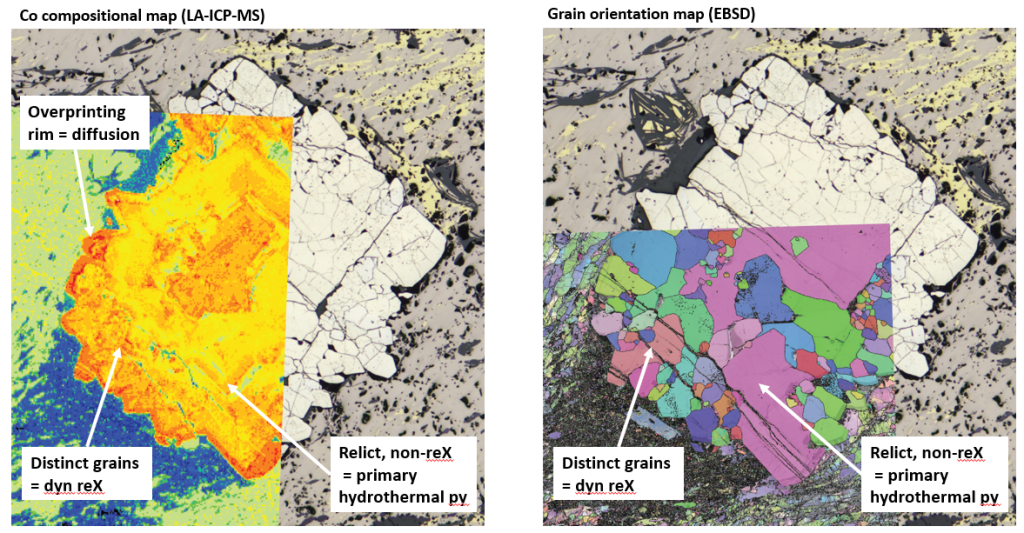
Sulphide minerals host a number of important trace elements, from gold and silver to metals critical to the energy transition, like cobalt. Deformation and metamorphism, however, can remobilize sulphides, and this can significantly change the distribution of these trace elements. By combining microstructural mapping by EBSD with quantitative compositional mapping by LA-ICP-MS, we’re investigating how different sulphide remobilization mechanisms affect the distribution of cobalt and other critical metals.
For more, check out my talk on the CTG Youtube channel: https://youtu.be/lBvUdTknKOw?si=F8JZxDlpgbQ1gA7b
Structural Controls and Timing of Gold Mineralization in SE California
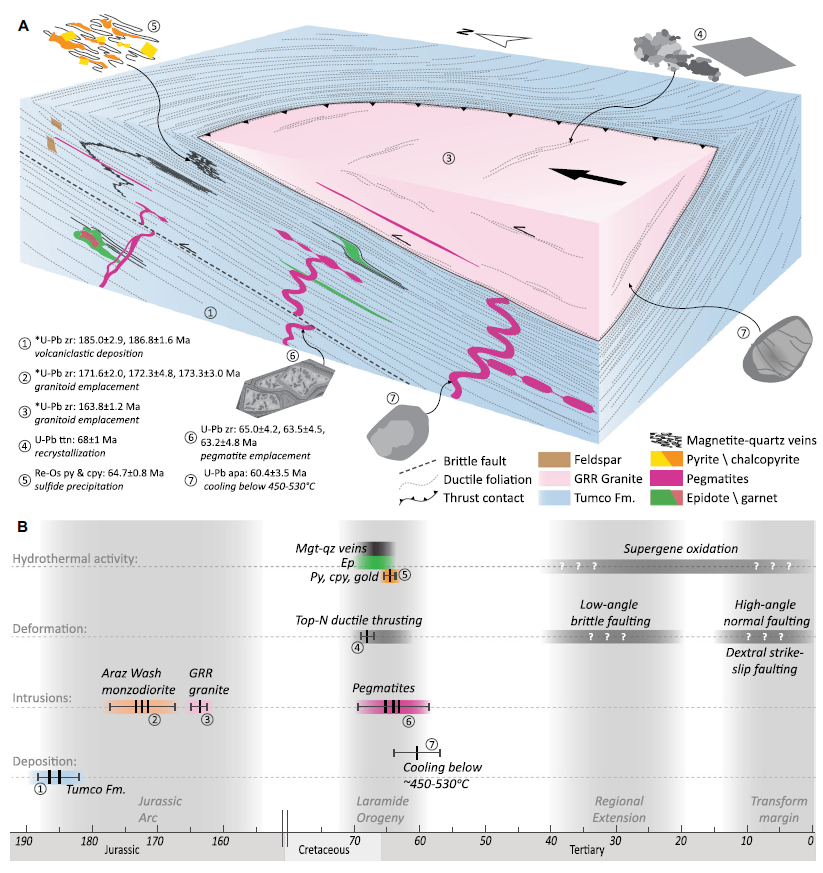
This project involved integrating field observations with geochronology and petrography to investigate gold mineralization at the Oro Cruz deposit in SE California, and determine its structural controls (hint, the gold was precipitated in a big ductile shear zone, later reactivated as a brittle fault) and timing (it’s all Late Cretaceous, related to the Laramide Orogeny).
Read all about it here: https://doi.org/10.1130/B36251.1
Tectonic Evolution and Geodynamic Setting of the Aggeneys-Gamsberg Ore District, South Africa
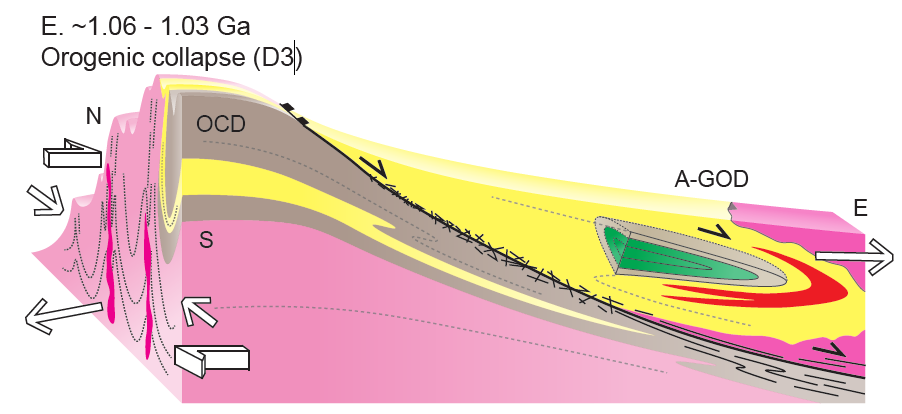
This world-class base metal district hosts >500 Mt of Zn-Pb-Cu-Ag ore (see https://doi.org/10.25131/gssajg.120.1.153), but the complex tectonic history makes exploration challenging… so we compiled all the zircon U-Pb geochronology we could lay our hands on, conducted some more, and combined all this with structural observations across the district. The result? A detailed tectonic history of the district (including the timing of multiple episodes of sedimentation, magmatism, deformation, and metamorphism), and some ideas on what it can tell us about the geodynamics of the Namaqua Sector as a whole (a dramatic tale of orogenesis, transtension, and collapse…).
For more, see our paper: https://doi.org/10.1016/j.oregeorev.2023.105440
A Multi-Stage Genetic Model for a Deformed and Metamorphosed Base Metal Deposit
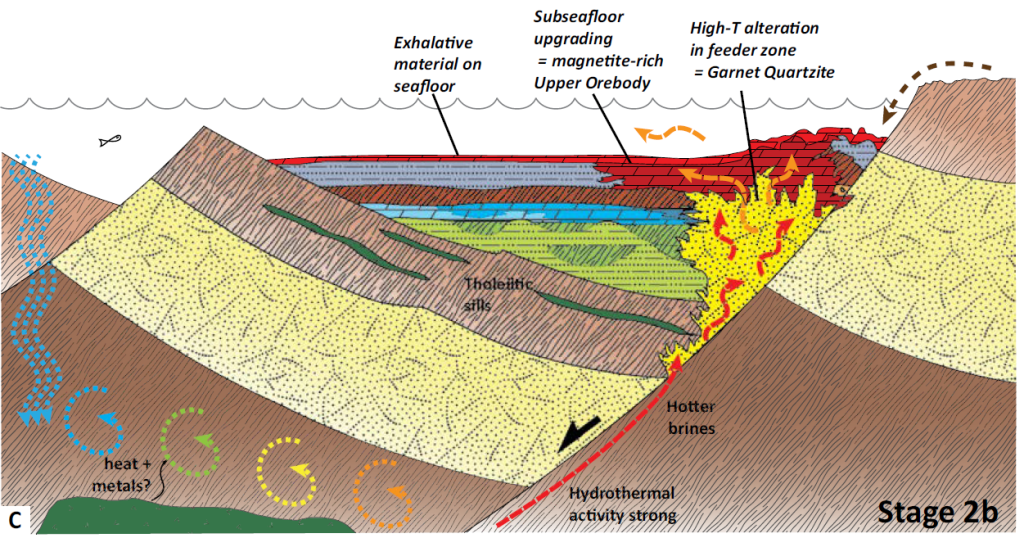
The polydeformed and -metamorphosed Swartberg Cu-Pb-Zn-Ag deposit in South Africa contains several different styles of mineralization, ranging from stratiform metapelitic zones with galena and sphalerite, to massive garnet quartzite with chalcopyrite. We show that the different mineralization styles likely reflect different stages of an evolving hydrothermal system, from early, low-temperature, exhalative sulfide mineralization on the seafloor, to later, high-temperature hydrothermal replacement within the feeder zone.
See our paper on this here: https://doi.org/10.25131/gssajg.120.1.153
Extracting P-T-t data from Deformed Granitoids
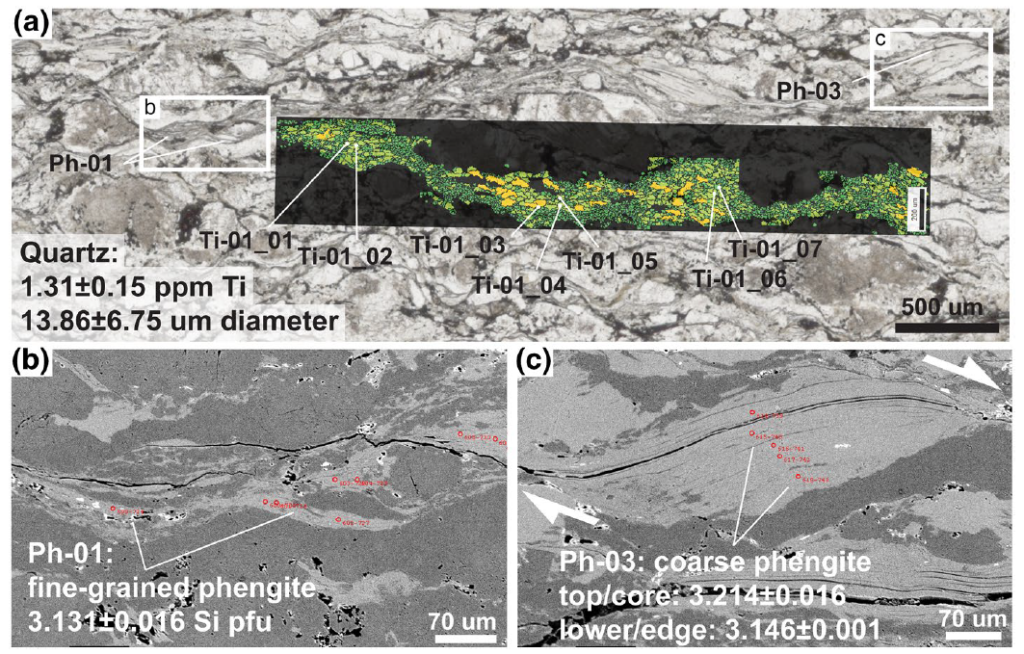
Estimating the conditions at which granitic rocks have been deformed is tricky, because ongoing deformation can overprint clues from the stage you’re interested in, and because granitoids lack many of the minerals typically used for estimating pressure and temperature (P-T) or geochronology (t).
To see how we tackled these challenges, see: https://doi.org/10.1029/2020GC009384
(sneak peak: we used careful mapping and microstructural analyses to identify specific stages of deformation, and then combined Ti-in-quartz thermometry with Si-in-white mica thermobarometry, and compared our P-T results to published thermochronological cooling ages to get the timing of deformation).
What Controls the Width of Ductile Shear Zones? Clues from the Central Alps
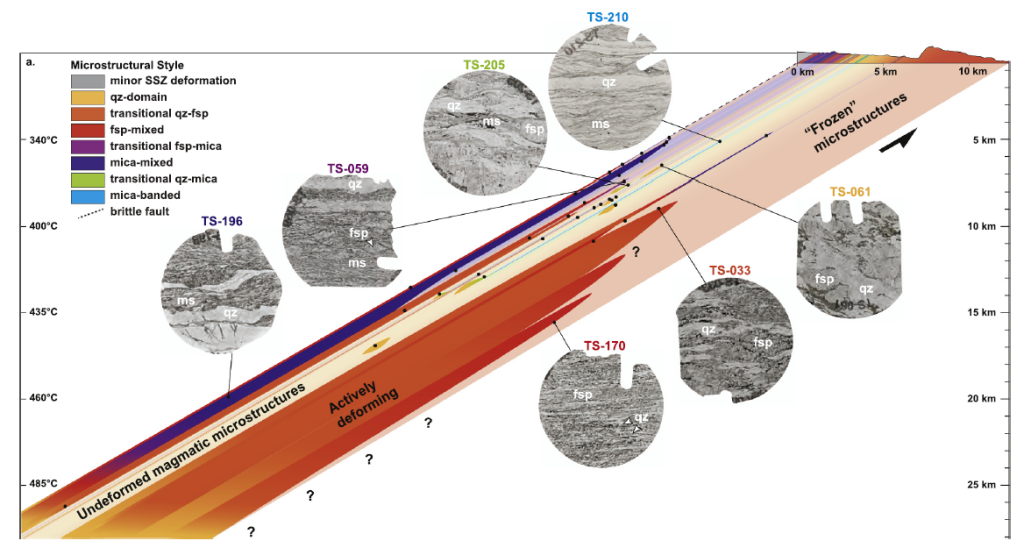
Many things! But primarily, the rate of displacement, and the rheology of the deforming rock (which itself depends on temperature, mineralogy, rock microstructure, fluids…).
My main Ph.D. research looked at the structural, geometrical and rheological characteristics of the Simplon Shear Zone in the European Alps, and reconstructed how these varied with depth in the crust and evolution of the fault zone. I then used this reconstruction to develop a scaling law for deforming granitoids, relating shear zone width to rheology and displacement rate.
For more info, see the paper at: https://doi.org/10.1016/j.tecto.2021.229033
Strain (De)-Localization Controlled by Syn-Magmatic Deformation and Protolith Composition: The ~6 km Wide Cuesta de Randolfo Mylonite Zone
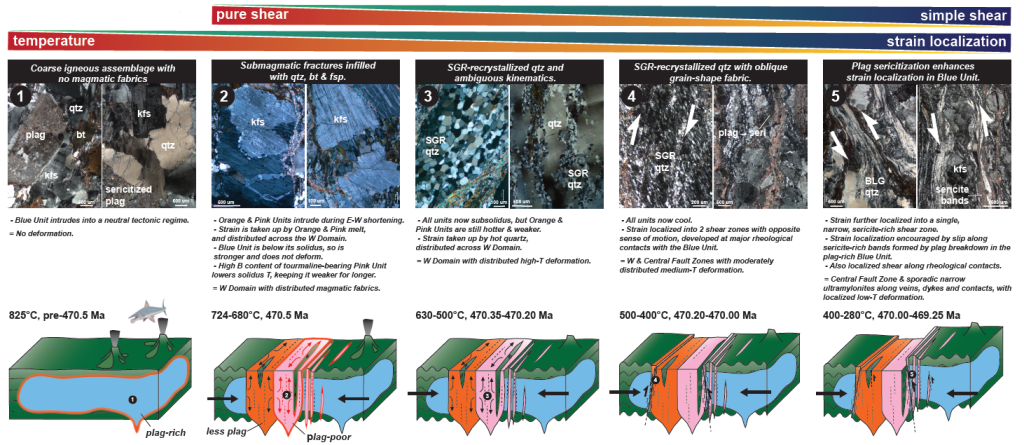
Numerous factors influence where a shear zone may form, and how localized the deformation may be. We investigated a wide shear zone (>6 km!) in the southern Puna region of Argentina, and showed that the initial location of the shear zone may have been governed by the distribution of a newly-emplaced S-type granite, with deformation concentrated into this weak partially-molten rock. After complete crystallization, strain was distributed across the width of the youngest, intrusive unit, which was the weakest unit at the time thanks to its quartz-rich composition. With further cooling, however, strain localized into narrow mylonite- to ultramylonite zones in older granitic units, as the plagioclase in these units was hydrated to form weak sericitic zones.
Read more here: https://doi.org/10.1016/j.jsames.2021.103561
